HPQ – the physics building of the future
The HPQ laboratory and office building will be the new physics building on the Hönggerberg campus of ETH Zurich. Featuring innovative lab and office facilities, the building will house state-of-the-art research infrastructure that will enable ETH to expand its position in the field of quantum technologies.
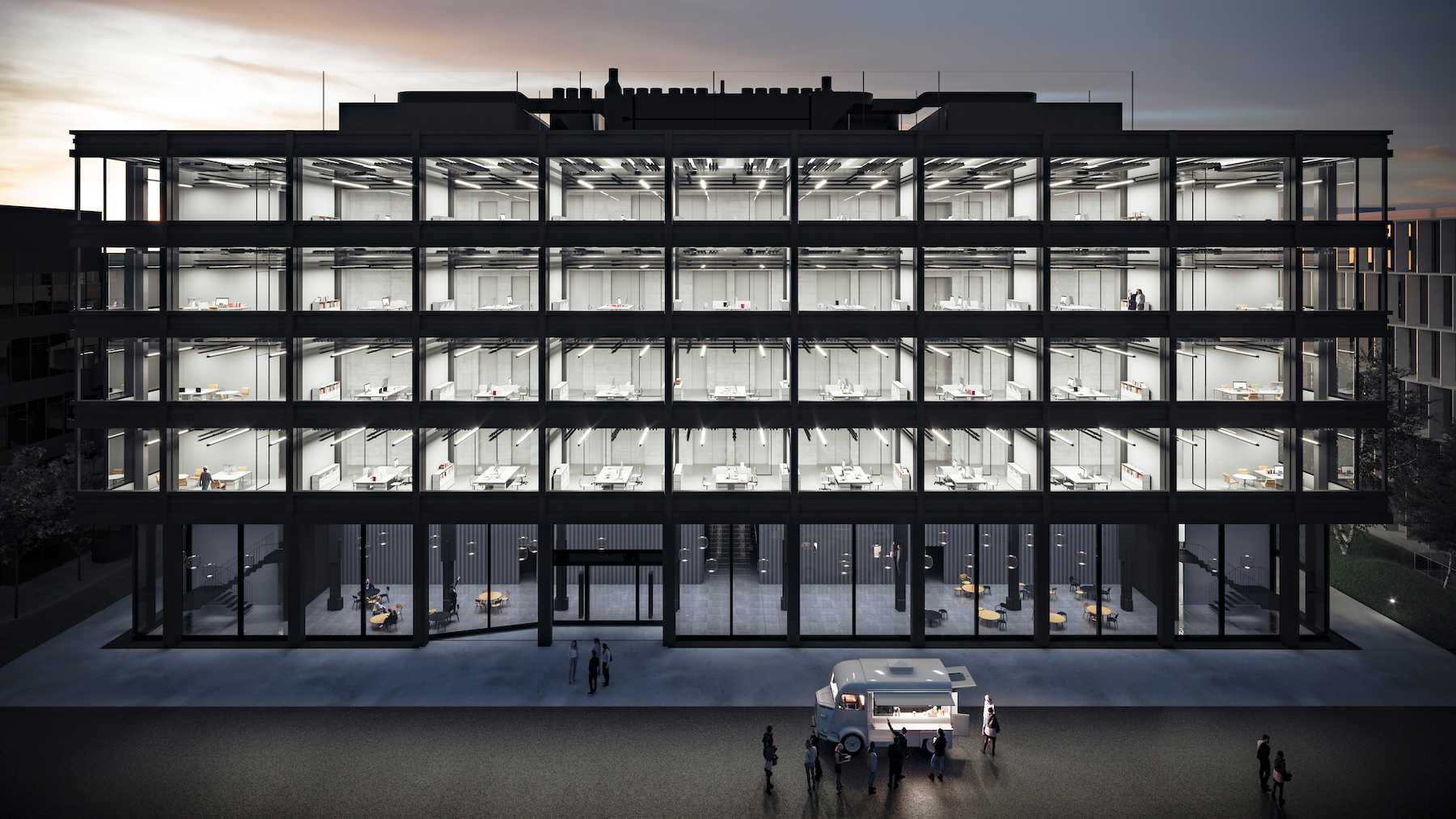
Thanks to rapid progress in the experimental sciences, today’s scientists can study physical phenomena on previously unattainable small scales and short time frames. Under these extreme conditions, quantum effects emerge that often appear to elude human understanding.
The investigation of these phenomena, which form the basis for future technologies and entirely new materials, is one of the main focuses of ETH Zurich’s Department of Physics and the interdepartmental technology platforms based at ETH Zurich. A new physics building will be established on the Hönggerberg campus in order to expand this research and prepare for the challenges of the future.
Prequalification and competition
As many as 50 teams consisting of experts from the fields of overall management, architecture and urban planning, civil engineering, and HVAC engineering submitted applications to participate in the project competition. In November 2015, the jury convened for prequalification. The winning entry was by external page Ilg Santer Architekten, Zurich.
Features of the building
Above ground, the building comprises four laboratory and office floors, a public double-height ground floor and a top floor with building services. The lower floors are split into a main building and a side building, the latter of which houses high-performance laboratories for especially sensitive research facilities.
Influences from inside and outside the building could severely disrupt the experiments conducted there or even render them impossible. The research in the underground laboratories places extremely high demands on the building in terms of vibration, electromagnetic compatibility, cooling performance and temperature stability.
Earth probe field below the building
A new earth probe field for the anergy grid is also being built below the building, which will make a significant contribution to a sustainable heat and cold supply for the connected buildings on the Hönggerberg. In the 189 earth probes, each of which extends 200 metres into the ground, heat or cold can be stored and extracted as needed. The HPQ building itself will also be connected to the anergy grid.
Campus integration and extension of the Flora Ruchat Roncati Garden
The perimeter of the HPQ building will be located in the northern part of the campus, between the HIT and HIL buildings. In order for the HPQ to be built, the Huber Pavilions erected as a temporary solution must be dismantled. The HPQ building will therefore accommodate the exit of the HIT building, making it particularly easily accessible from Wolfgang-Pauli-Strasse.
Its glass façade will add further transparency to the campus landscape. According to the jury’s report, the HPQ’s compact structure blends elegantly into its surroundings and allows the maximum extension of the Flora Ruchat Roncati garden as envisaged in the 2040 masterplan. The project of expanding the listed garden will focus on protecting and supporting biodiversity. From the extended garden area, visitors will have direct access to the cafeteria terrace.
HPQ in images
 The rear of the building directly backs onto the extended Flora Ruchat Roncati Garden, a popular recreational site. (Visualisation: Ilg Santer Architekten)
The rear of the building directly backs onto the extended Flora Ruchat Roncati Garden, a popular recreational site. (Visualisation: Ilg Santer Architekten)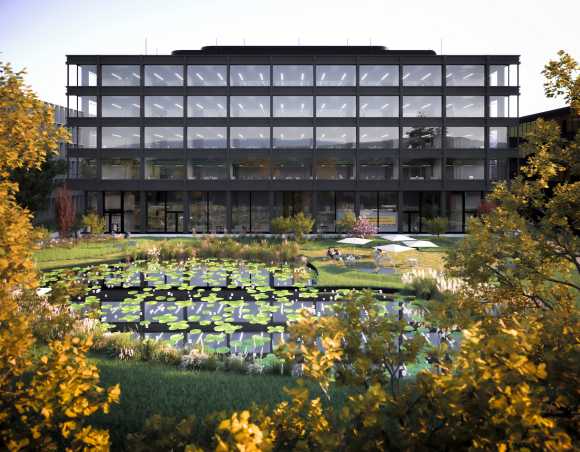 The ground floor houses a public cafeteria for researchers, students and visitors. (Visualisation: Ilg Santer Architekten)
The ground floor houses a public cafeteria for researchers, students and visitors. (Visualisation: Ilg Santer Architekten)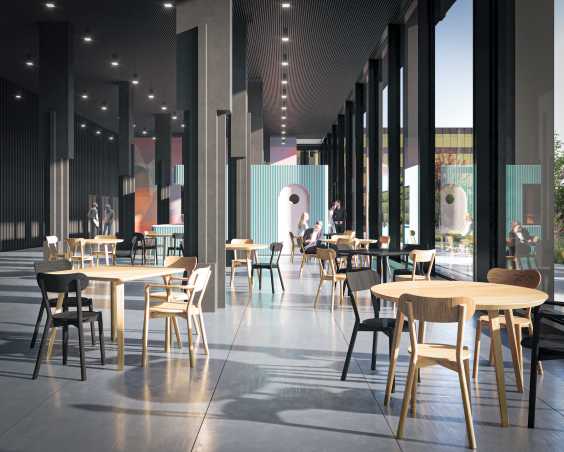 The four floors above ground consist of laboratories, office spaces and social areas. (Visualisation: Ilg Santer Architekten)
The four floors above ground consist of laboratories, office spaces and social areas. (Visualisation: Ilg Santer Architekten)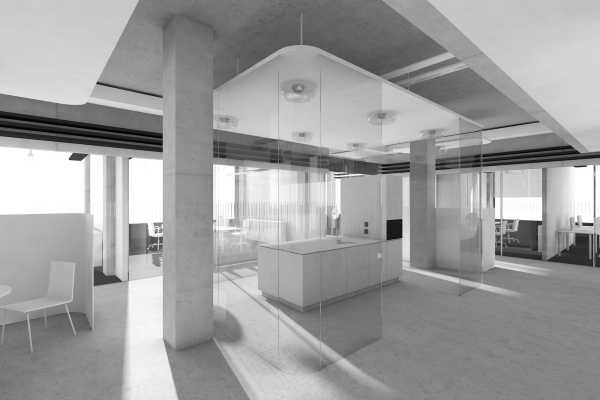 The underground building volume is almost twice as large as that on the upper floors. Highly sensitive laboratories and technology platforms are shielded from external influences there. A new earth probe field for the anergy grid is being built underneath the building. (Visualisation: Ilg Santer Architekten)
The underground building volume is almost twice as large as that on the upper floors. Highly sensitive laboratories and technology platforms are shielded from external influences there. A new earth probe field for the anergy grid is being built underneath the building. (Visualisation: Ilg Santer Architekten)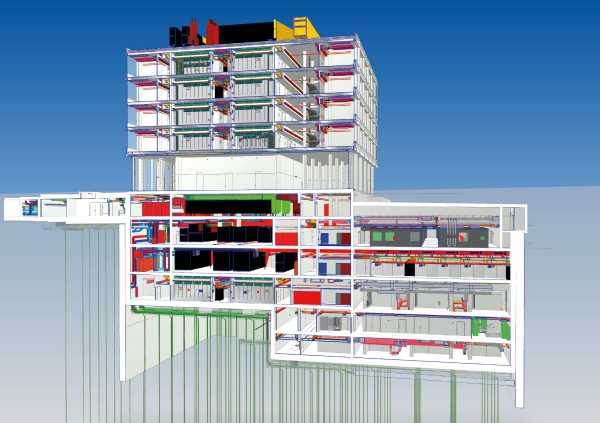 The excavation pit is of considerable size. It will probably be around 75 metres long, 67 metres wide and 28 metres deep. (Visualisation: Fürst Laffranchi Bauingenieure und Kalt + Halbeisen Ingenieure)
The excavation pit is of considerable size. It will probably be around 75 metres long, 67 metres wide and 28 metres deep. (Visualisation: Fürst Laffranchi Bauingenieure und Kalt + Halbeisen Ingenieure)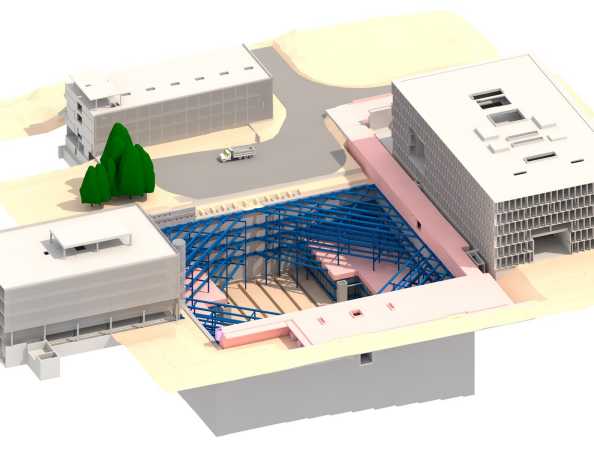 To secure the excavation pit and the future HPQ building against the ingress of groundwater, a one-metre-wide diaphragm wall is being constructed all around, which will be partially led down to the bedrock and anchored there. (Visualisation: Fürst Laffranchi Bauingenieure und Kalt + Halbeisen Ingenieure)
To secure the excavation pit and the future HPQ building against the ingress of groundwater, a one-metre-wide diaphragm wall is being constructed all around, which will be partially led down to the bedrock and anchored there. (Visualisation: Fürst Laffranchi Bauingenieure und Kalt + Halbeisen Ingenieure)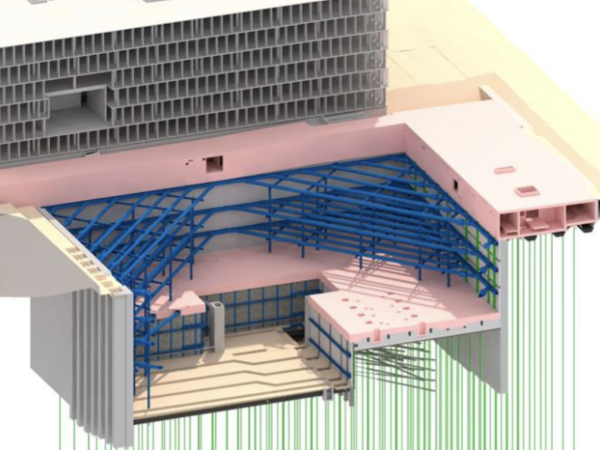
Key dates
The project at a glance
Donation

A generous donation from ETH alumnus and ETH Honorary Councillor Martin Haefner supports the realisation of the project: “For me, it’s about Switzerland as a research location. I support ETH Zurich in order to facilitate innovation and progress.” You can read all articles about the topic on the external page website of the ETH Foundation (in German).